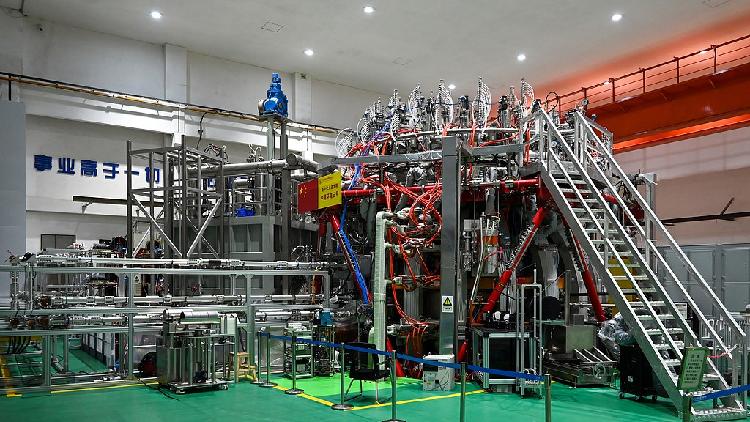China Demonstrates Strong Progress in Nuclear and Space Technologies
The "Two Bombs and One Satellite" project, which pertains to the atomic bomb, the intercontinental ballistic missile, and the artificial satellite developed by China during the 1960s and early 1970s, represented a major achievement that has strengthened China's scientific and defense capabilities.

This initiative instilled values such as patriotism, dedication, hard work, and the bravery to conquer technological peaks, inspiring consecutive generations in China.
Since these principles were established 25 years ago, there have been substantial advancements in China's nuclear and space technology sectors.
With respect to nuclear strategy, China has adopted a three-tier approach consisting of "thermal neutron reactor, fast reactor, and controllable nuclear fusion reactor," resulting in notable accomplishments in both safety and innovation in nuclear development. As of late 2023, China is leading globally with 26 nuclear reactors under construction, boasting a combined capacity of 30.3 gigawatts, according to the China Nuclear Energy Development Report 2024 released in April.
The report further notes that in 2023, China’s nuclear power generation reached approximately 433.4 billion kilowatt-hours, securing second place worldwide. The output for that year was crucial for reducing standard coal consumption by over 130 million tonnes.
On the technological front, last December saw the activation of the world’s initial fourth-generation nuclear power plant at Shidaowan, known for its high temperature gas-cooled reactor. "The operation of the nuclear power plant is of great significance in promoting the safety as well as the scientific, technological and innovation capabilities of China's nuclear power development," said Zhang Yanxu, the general manager of the project. The plant’s expansion commenced in July, planning to include a new third-generation pressurized water reactor, Hualong One.
Recently, the Huanliu-3 facility, dubbed the new-era "artificial sun," achieved a major breakthrough by achieving a plasma current of one million amperes, reaffirming China’s leadership in magnetic confinement nuclear fusion technology.
In the realm of space exploration, China now operates over 900 satellites that aid diverse industries. During the calamitous Super Typhoon Yagi in early September, China's Fengyun satellites were instrumental in monitoring the typhoon, providing continuous alerts about its trajectory and intensity. These satellites are crucial for weather forecasting and disaster mitigation, proving essential during severe climate incidents.
China’s expansive satellite infrastructure aids in applications across communication, remote sensing, and navigation, creating a vast ecosystem of applications. For instance, the domestic BeiDou navigation system is heavily utilized, exceeding 600 billion uses daily.
The China Academy of Space Technology has notably reduced satellite manufacturing times from six months to just 20 days through the application of intelligent technologies and modular manufacturing processes. China also collaborates internationally in satellite services through multiple partnerships.
Looking towards deeper space ambitions, China began its lunar exploration endeavors in 2004 and aims for a manned lunar landing by 2030. The International Lunar Research Station, proposed in 2017, is designed to culminate into a significant lunar settlement by 2050, featuring a multi-node exploration network. China's Mars exploration is also progressing, with plans to launch the Tianwen-3 mission in 2028 to return samples from Mars.
Anna Muller for TROIB News
Find more stories on the environment and climate change on TROIB/Planet Health












